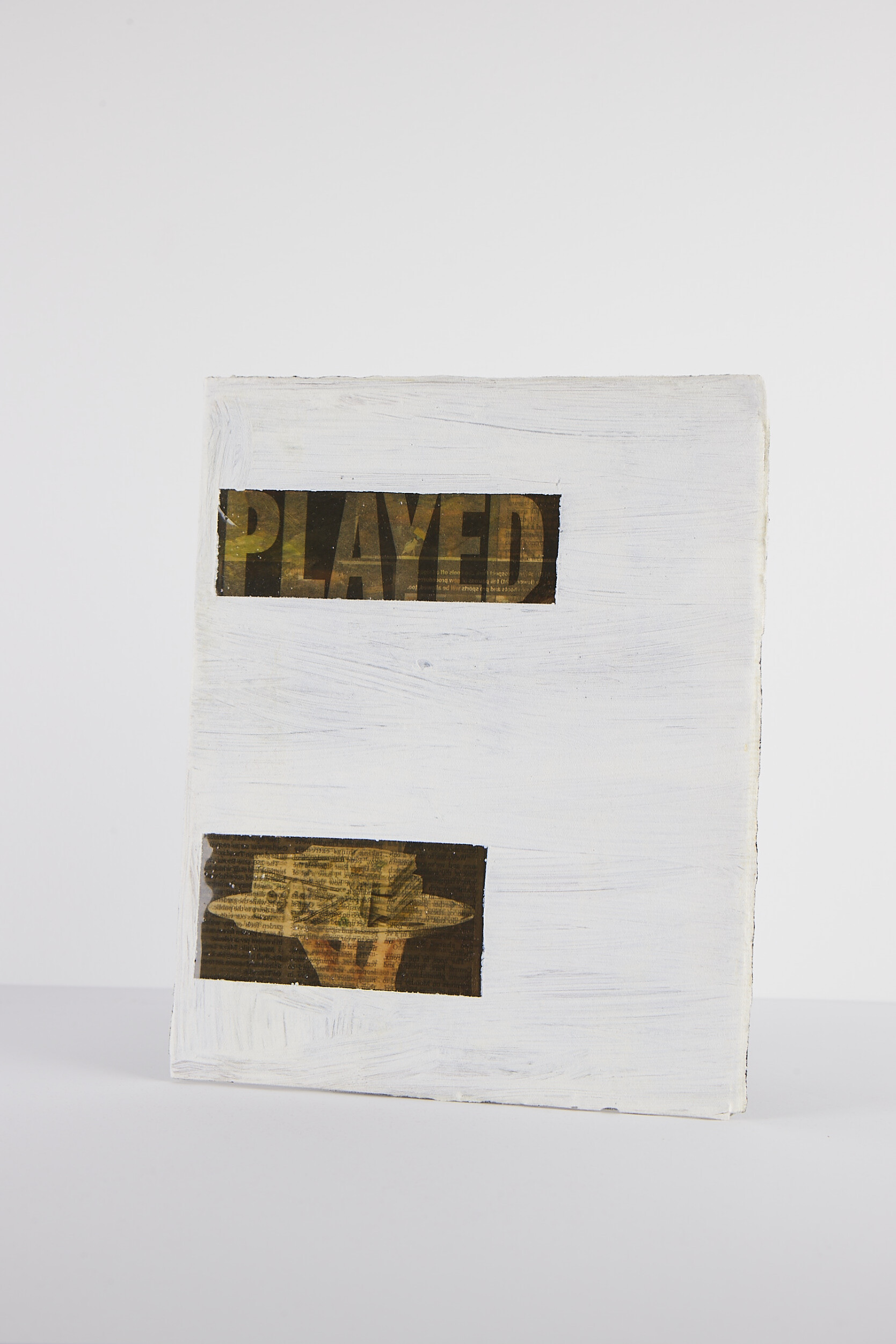21/10/2020 – 21/10/2020
Rachel Libeskind, You don't look historical. You look hysterical.Rachel Libeskind, You don't look historical. You look hysterical.
21/10/2020 – 21/10/2020
Rachel Libeskind, You don't look historical. You look hysterical.
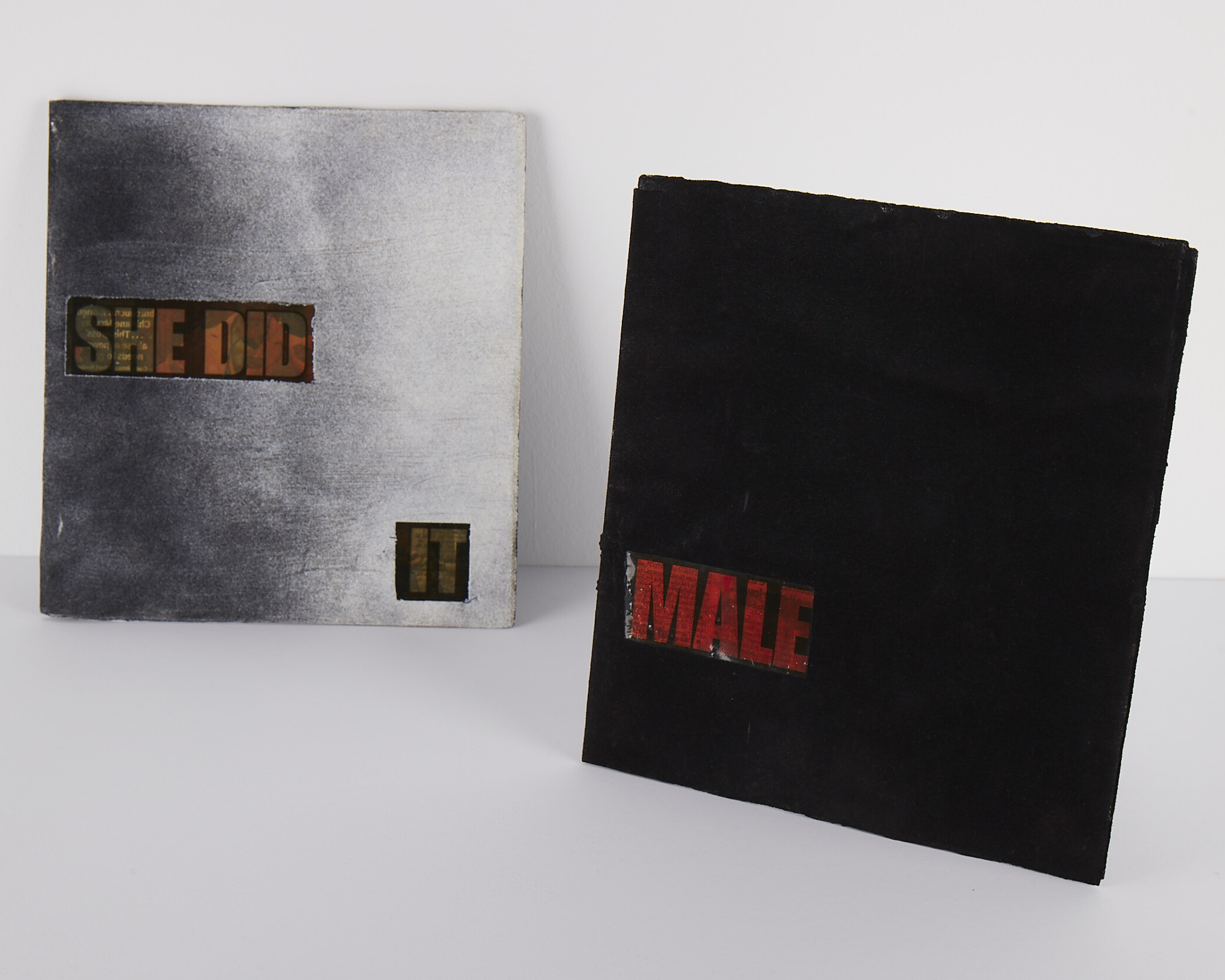
Installation ViewInstallation View
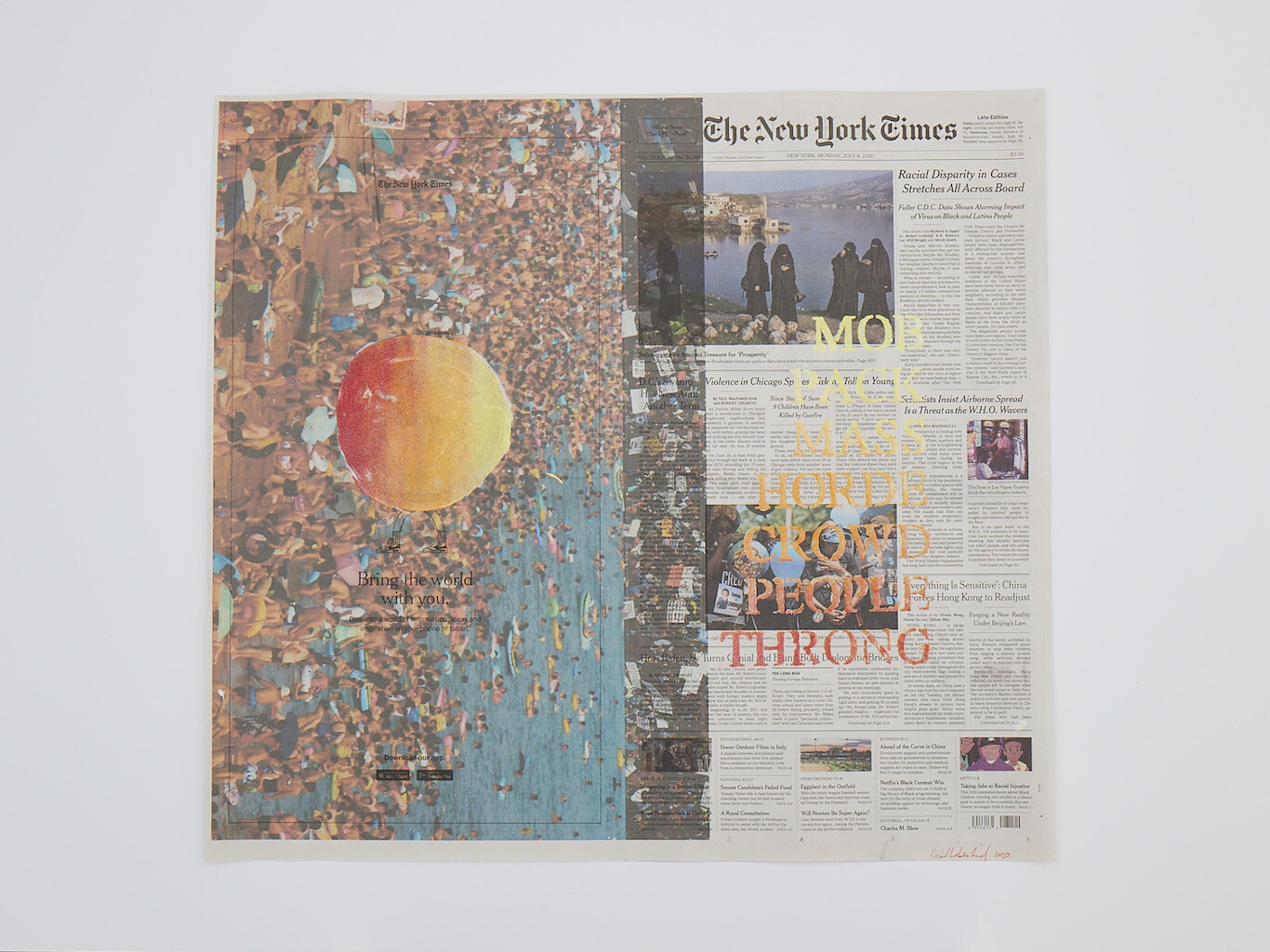
Protest in the Sun, Inkjet on collected New York Times sheet with nylon flocking, 2020Protest in the Sun, Inkjet on collected New York Times sheet with nylon flocking, 2020
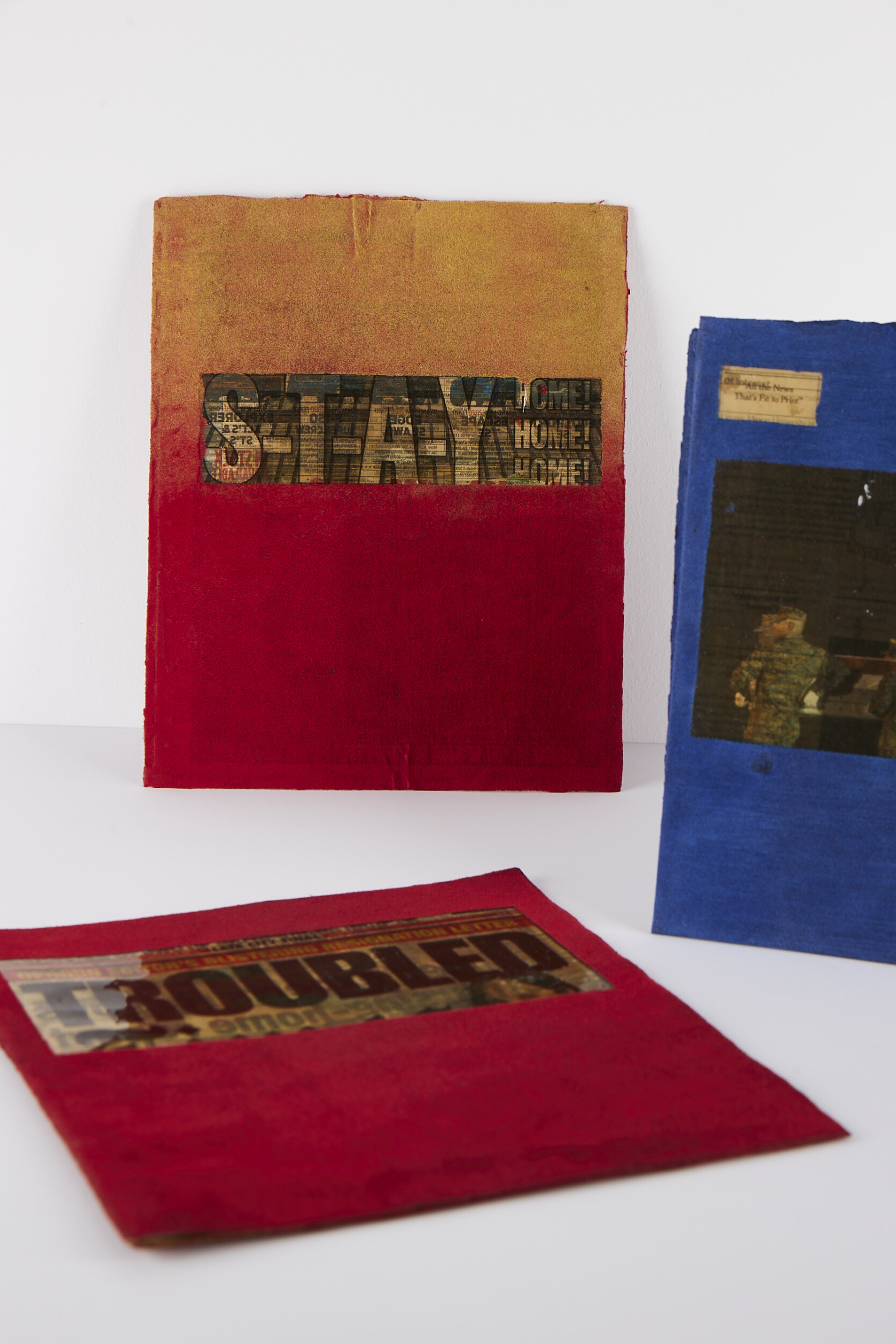
Installation ViewInstallation View
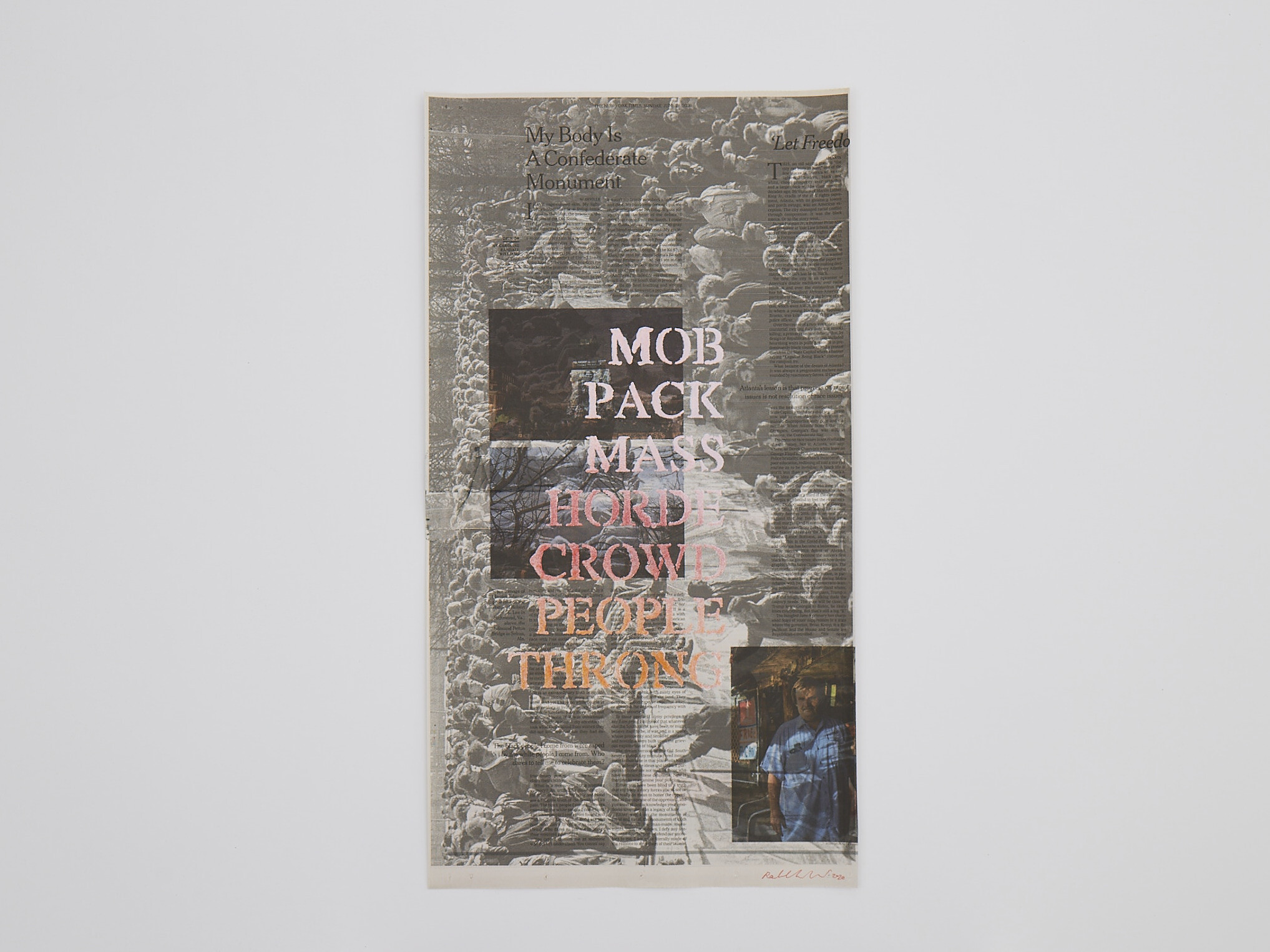
Soft Society, Inkjet on collected New York Times sheet with nylon flocking, 2020Soft Society, Inkjet on collected New York Times sheet with nylon flocking, 2020
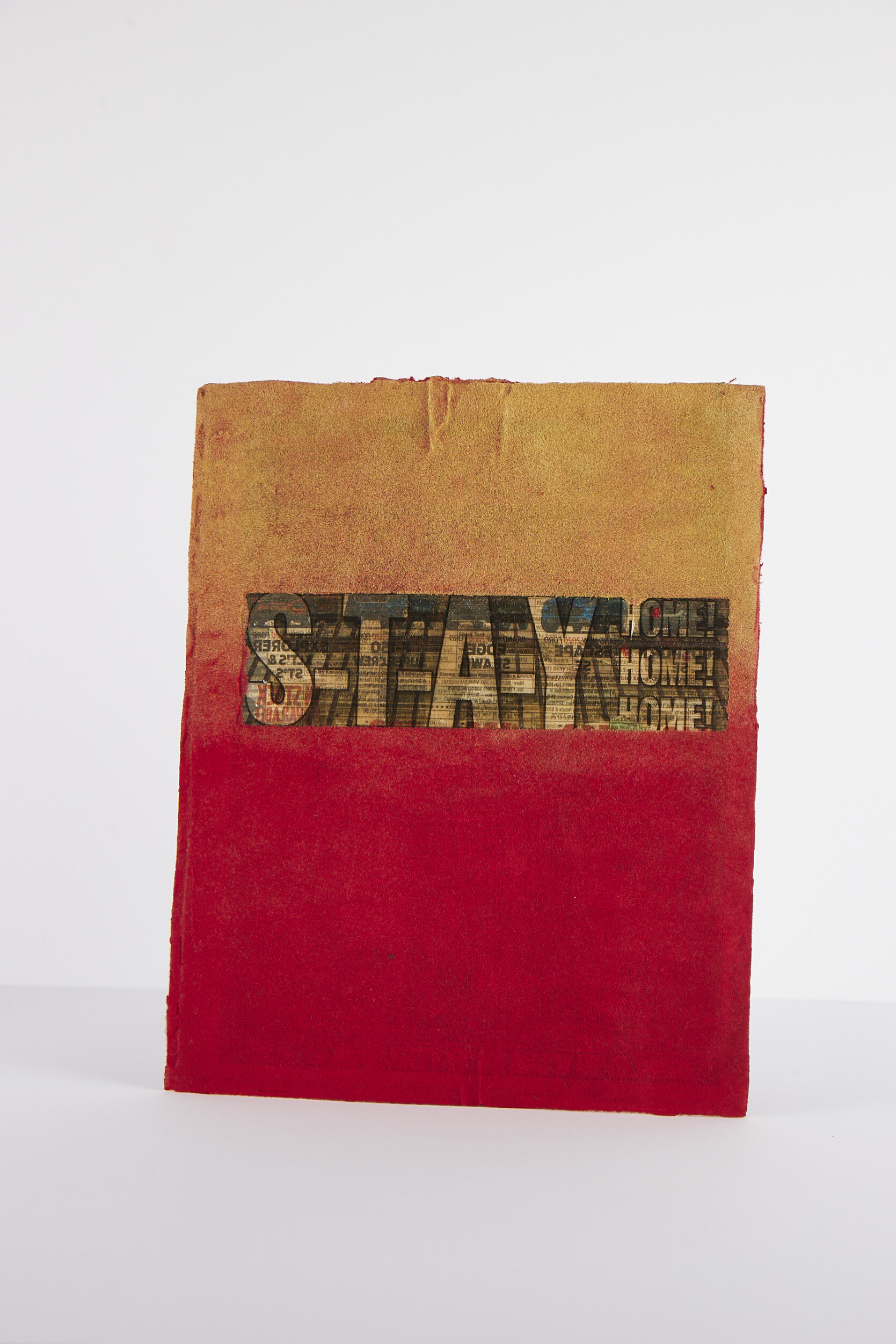
The Crowd at Rest (Day 50), Folded newspaper with epoxy resin and nylon flocking fiber, 2020The Crowd at Rest (Day 50), Folded newspaper with epoxy resin and nylon flocking fiber, 2020
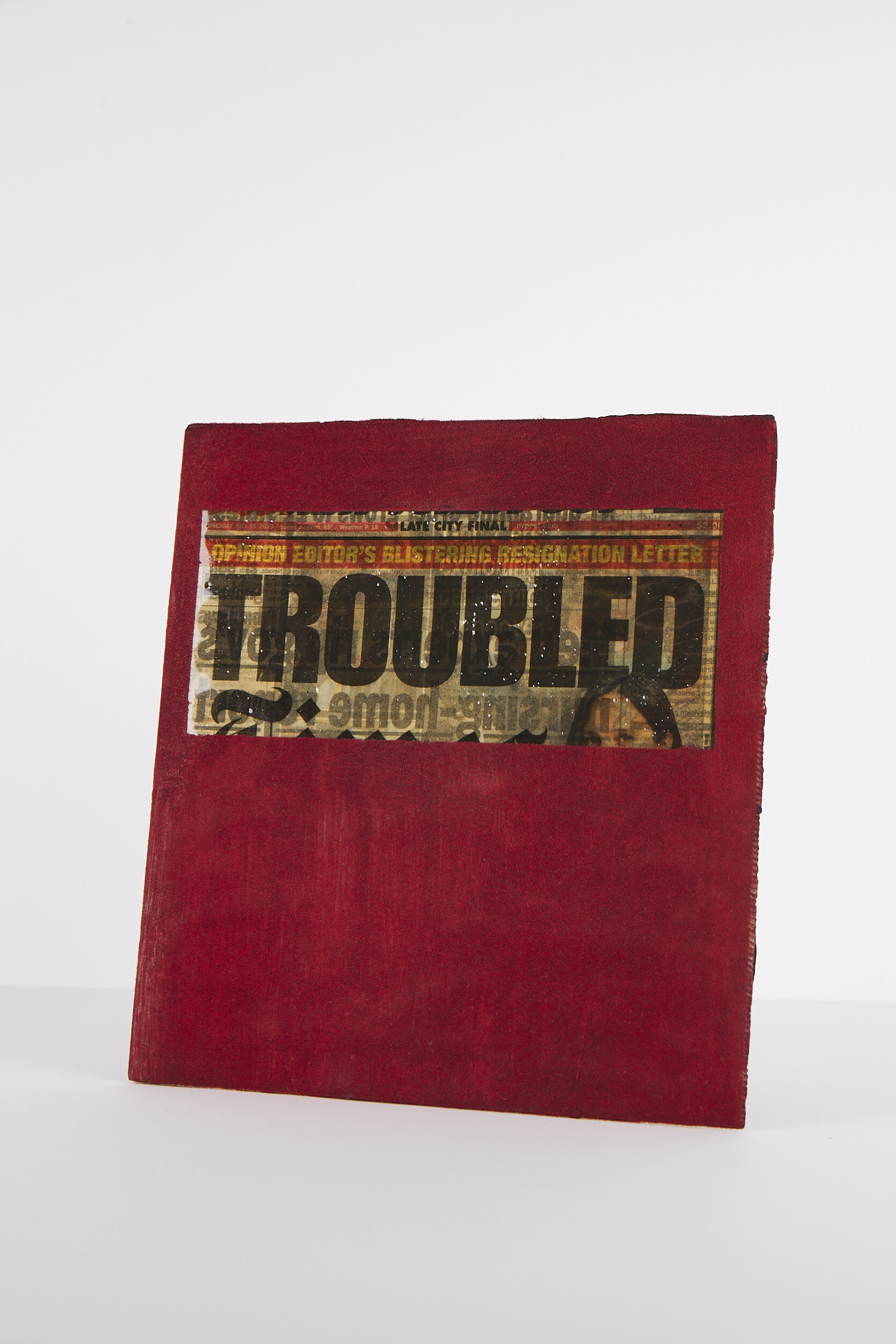
There's Never Enough Trouble (Day 61), Folded newspaper with epoxy resin and nylon flocking fiber, 2020There's Never Enough Trouble (Day 61), Folded newspaper with epoxy resin and nylon flocking fiber, 2020
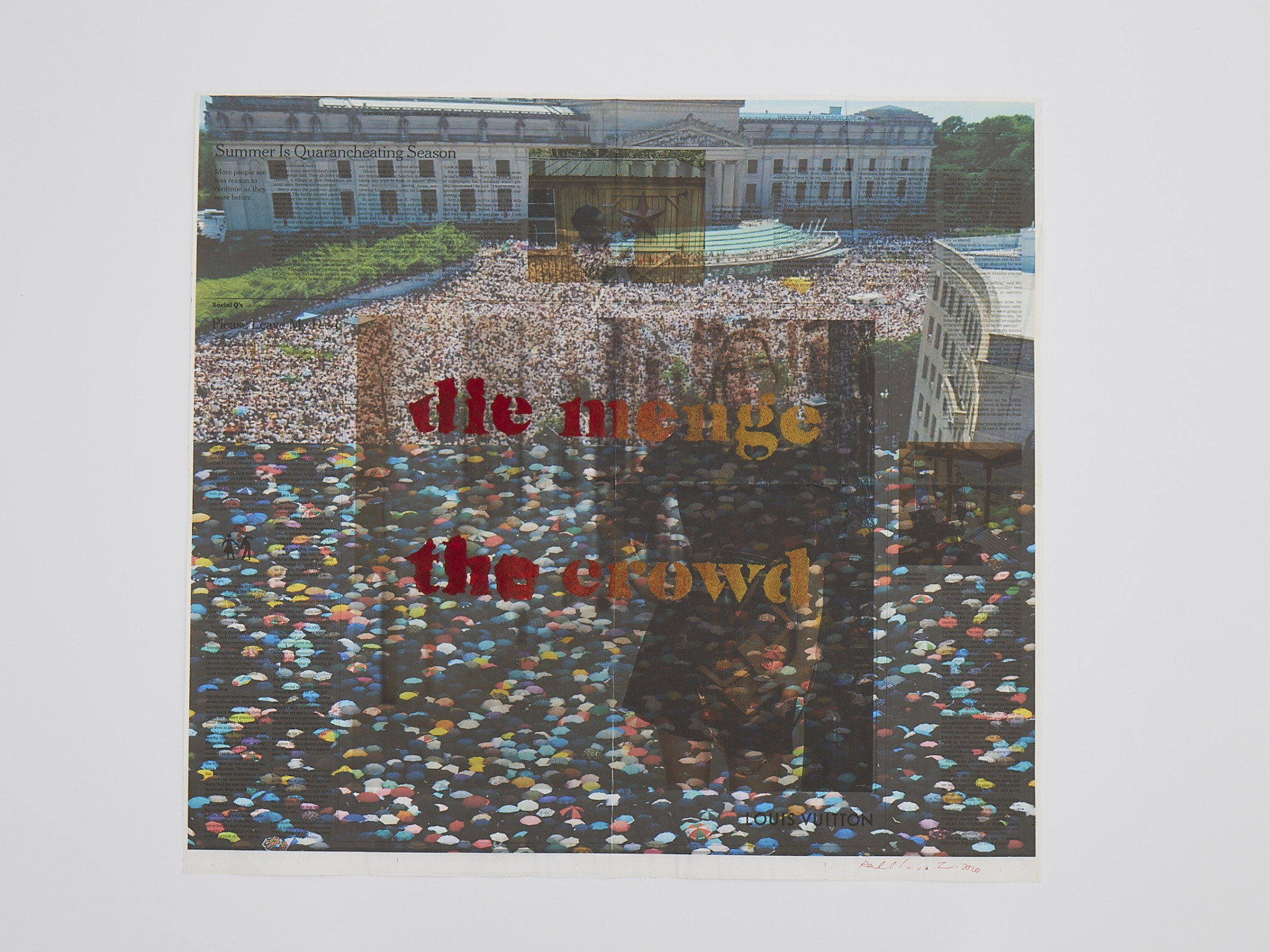
Yellow Colored Summer Crowd, Inkjet on collected New York Times sheet with Nylon Flocking Fiber, 2020Yellow Colored Summer Crowd, Inkjet on collected New York Times sheet with Nylon Flocking Fiber, 2020
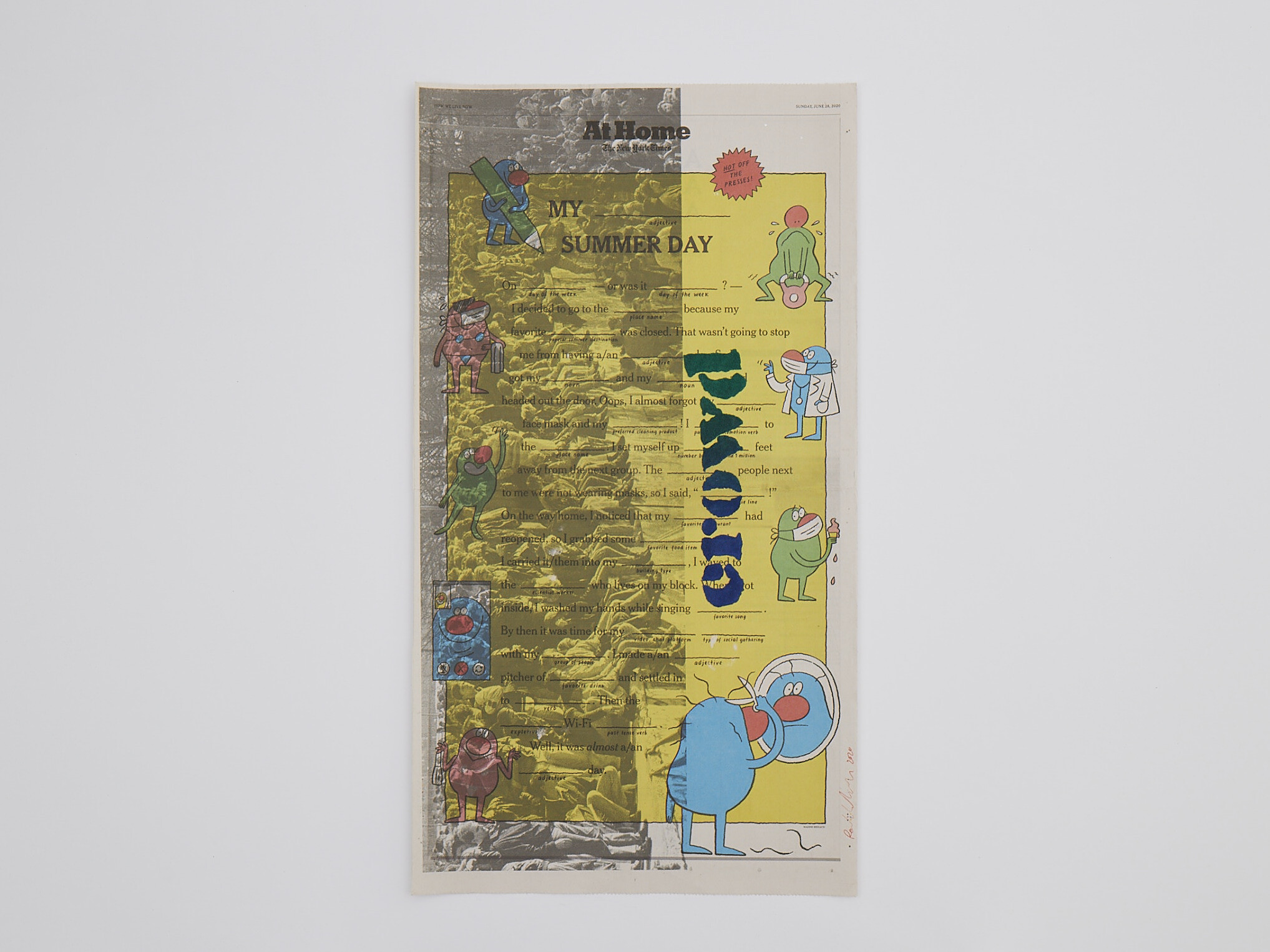
Yellow Walls, Inkjet on collected New York Times sheet with Nylon Flocking Fiber, 2020Yellow Walls, Inkjet on collected New York Times sheet with Nylon Flocking Fiber, 2020
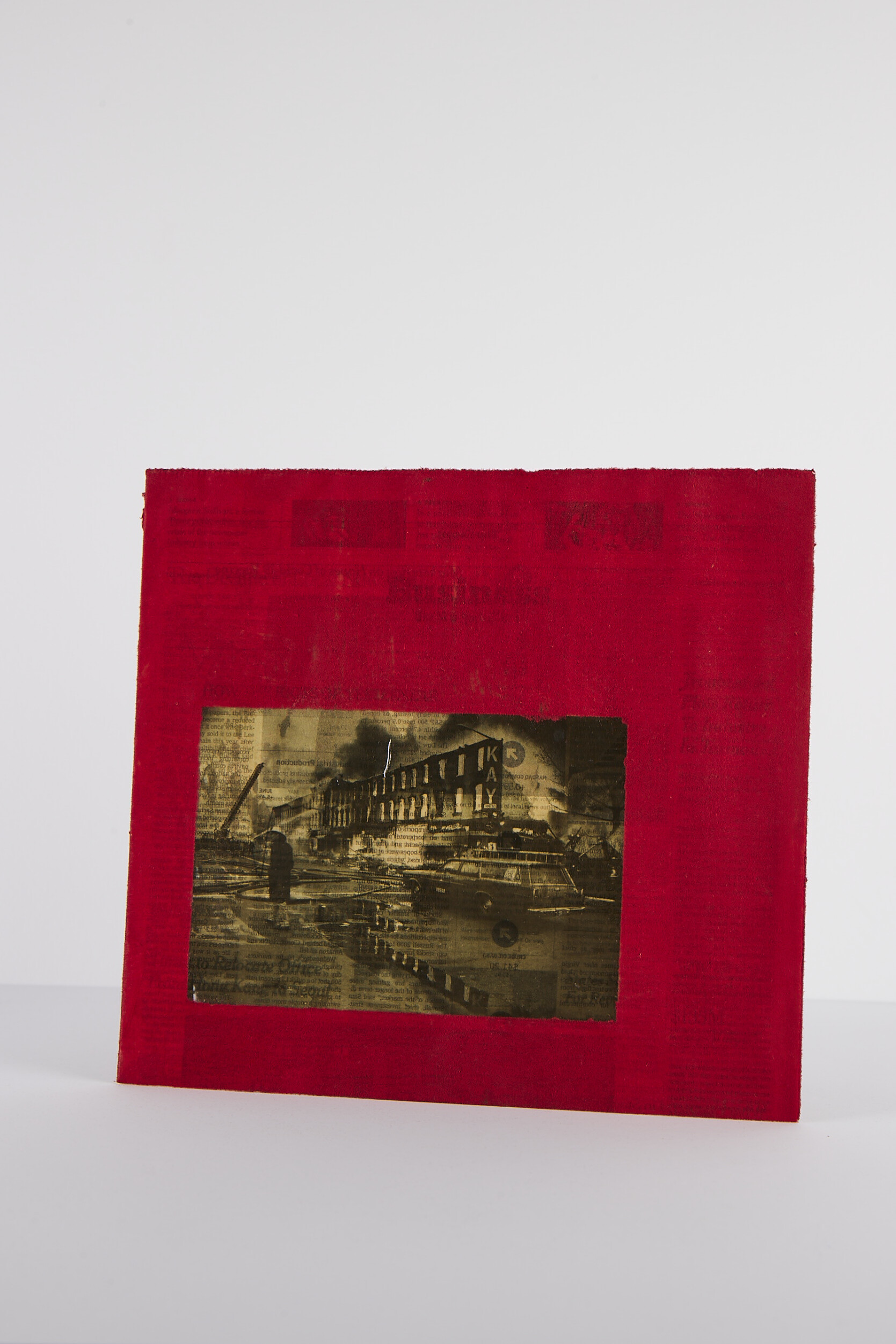
Yesterday's Paper is Today's Garbage (Day 101), Folded newspaper with epoxy resin and nylon flocking fiber, 2020Yesterday's Paper is Today's Garbage (Day 101), Folded newspaper with epoxy resin and nylon flocking fiber, 2020
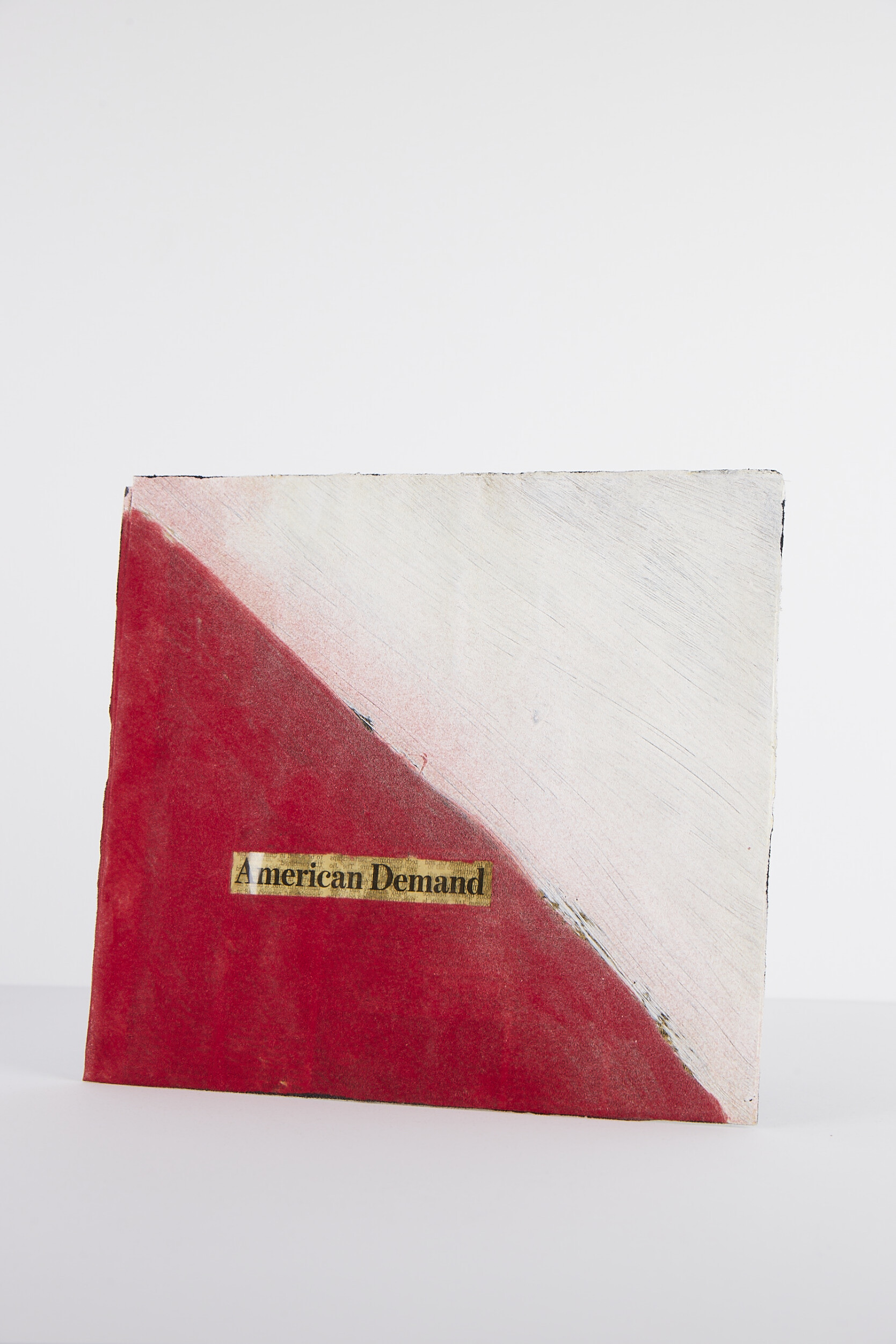
American Demand! (Day 100), Folded newspaper with epoxy resin and nylon flocking fiber, 2020American Demand! (Day 100), Folded newspaper with epoxy resin and nylon flocking fiber, 2020
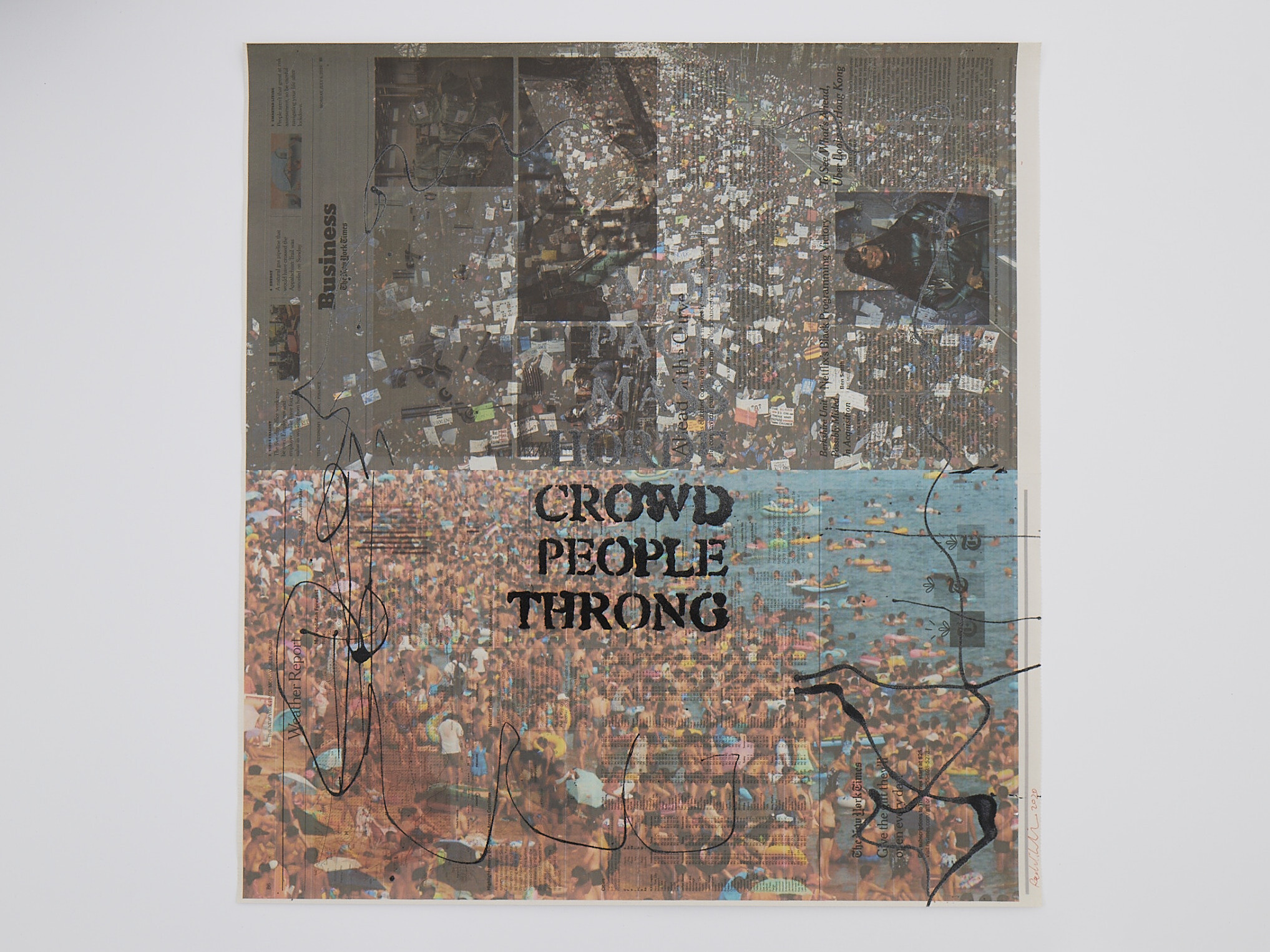
Beaches Full of Cardboard Signs, Folded newspaper with epoxy resin and nylon flocking fiber, 2020Beaches Full of Cardboard Signs, Folded newspaper with epoxy resin and nylon flocking fiber, 2020
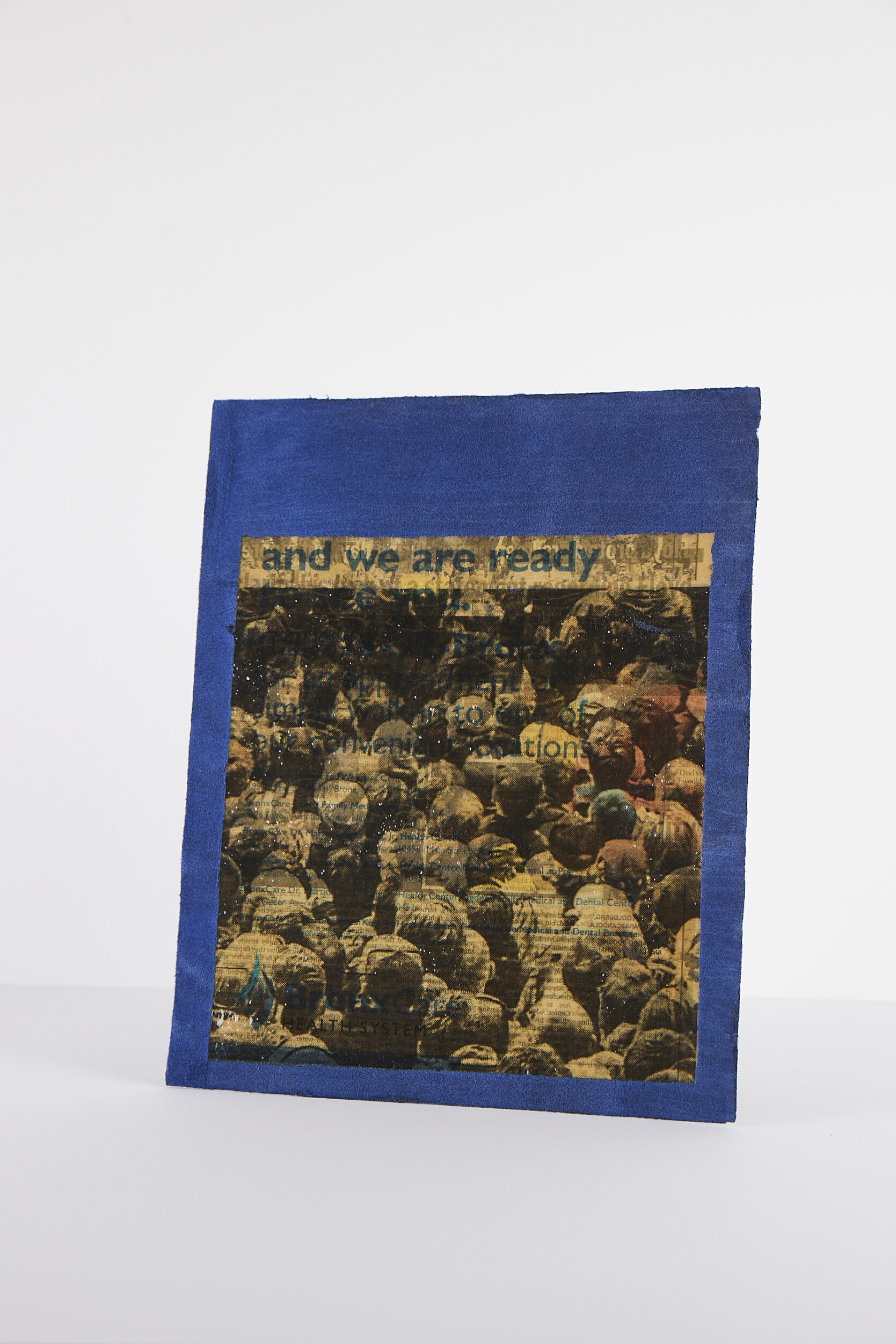
And We (Day 88), Folded newspaper with epoxy resin and nylon flocking fiber, 2020And We (Day 88), Folded newspaper with epoxy resin and nylon flocking fiber, 2020
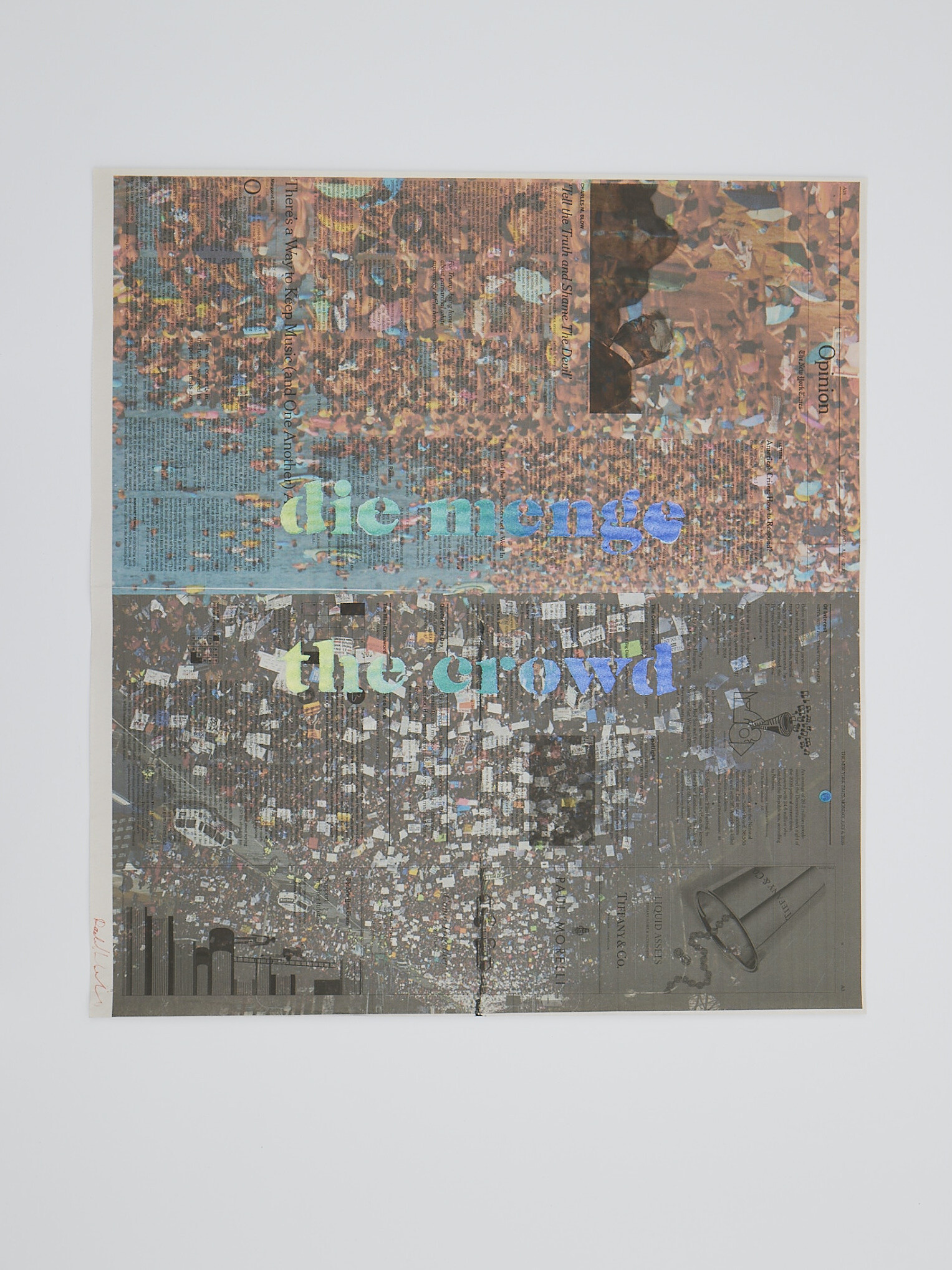
Demo at the Beach, Folded newspaper with epoxy resin and nylon flocking fiber, 2020Demo at the Beach, Folded newspaper with epoxy resin and nylon flocking fiber, 2020

Installation ViewInstallation View
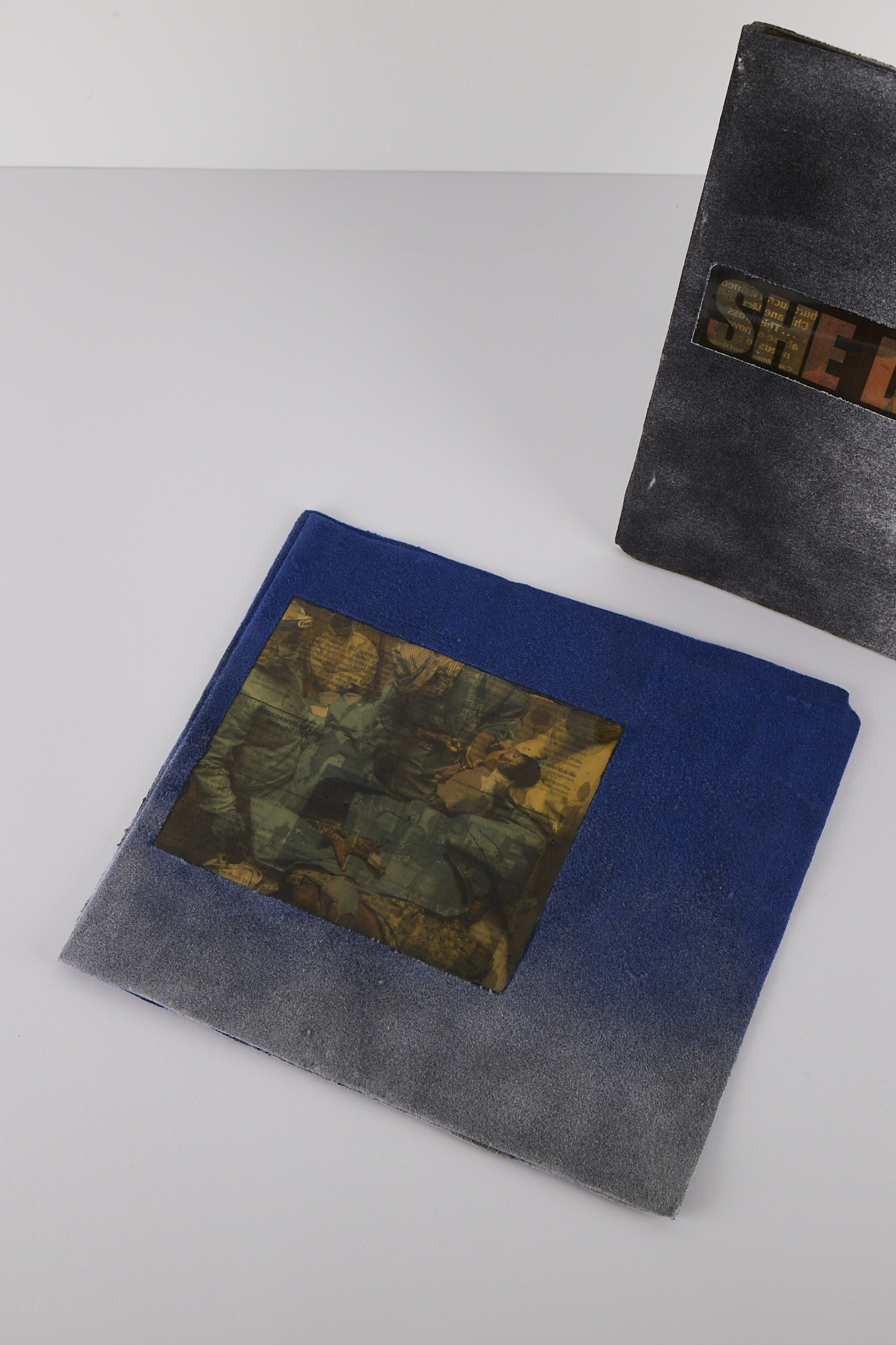
Installation ViewInstallation View
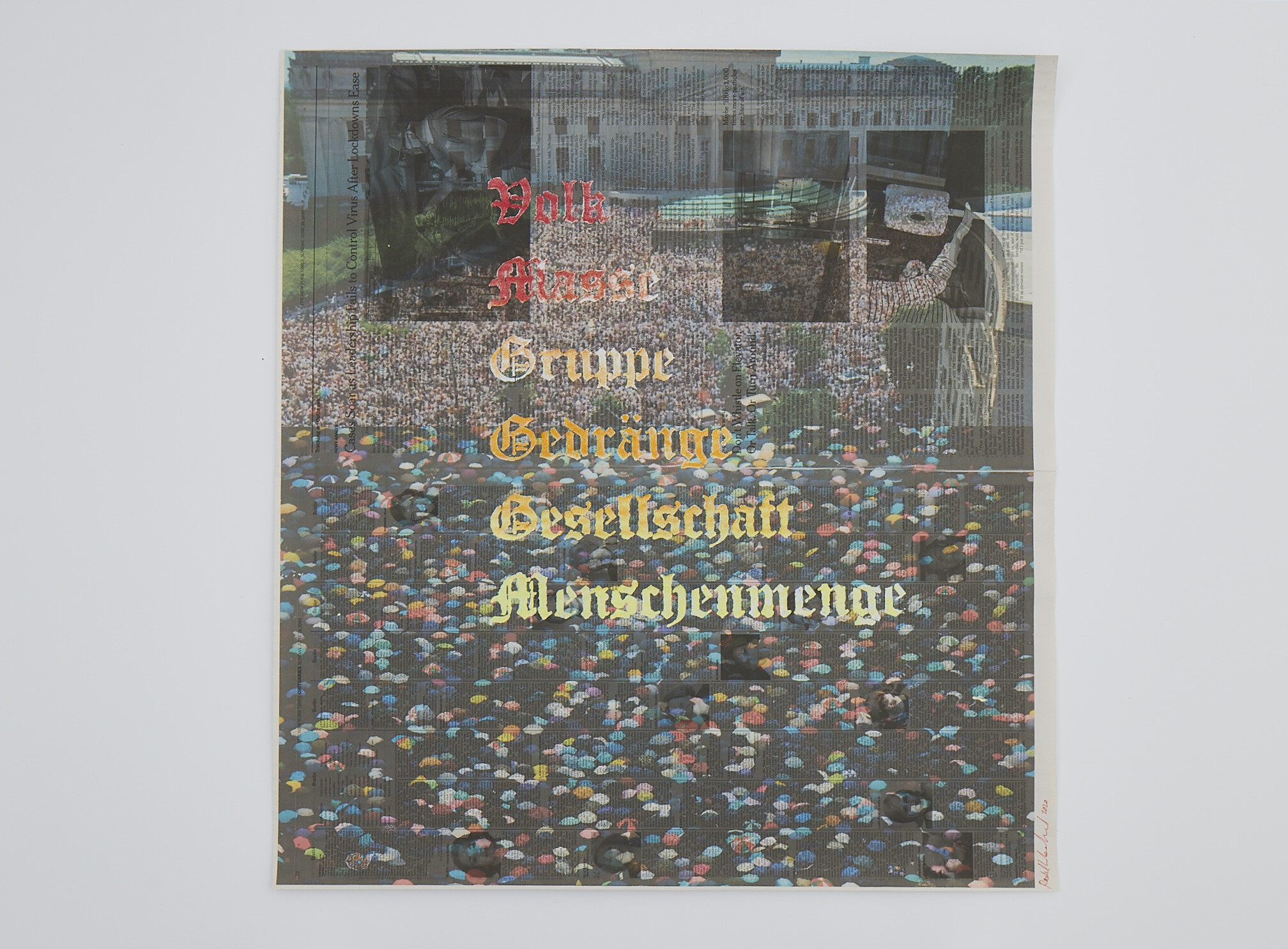
Rally at the Library, Folded newspaper with epoxy resin and nylon flocking fiber, 2020Rally at the Library, Folded newspaper with epoxy resin and nylon flocking fiber, 2020
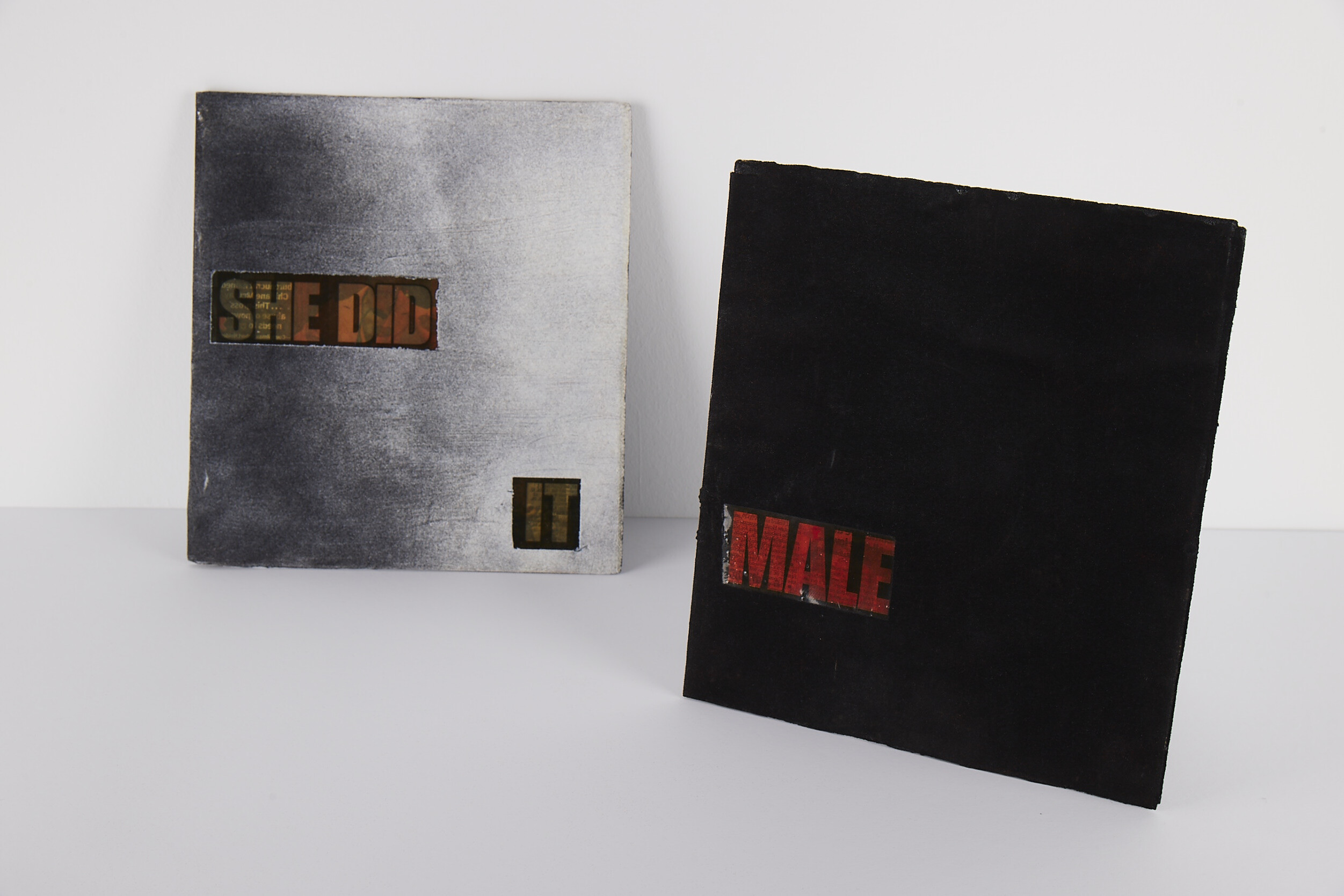
Installation ViewInstallation View
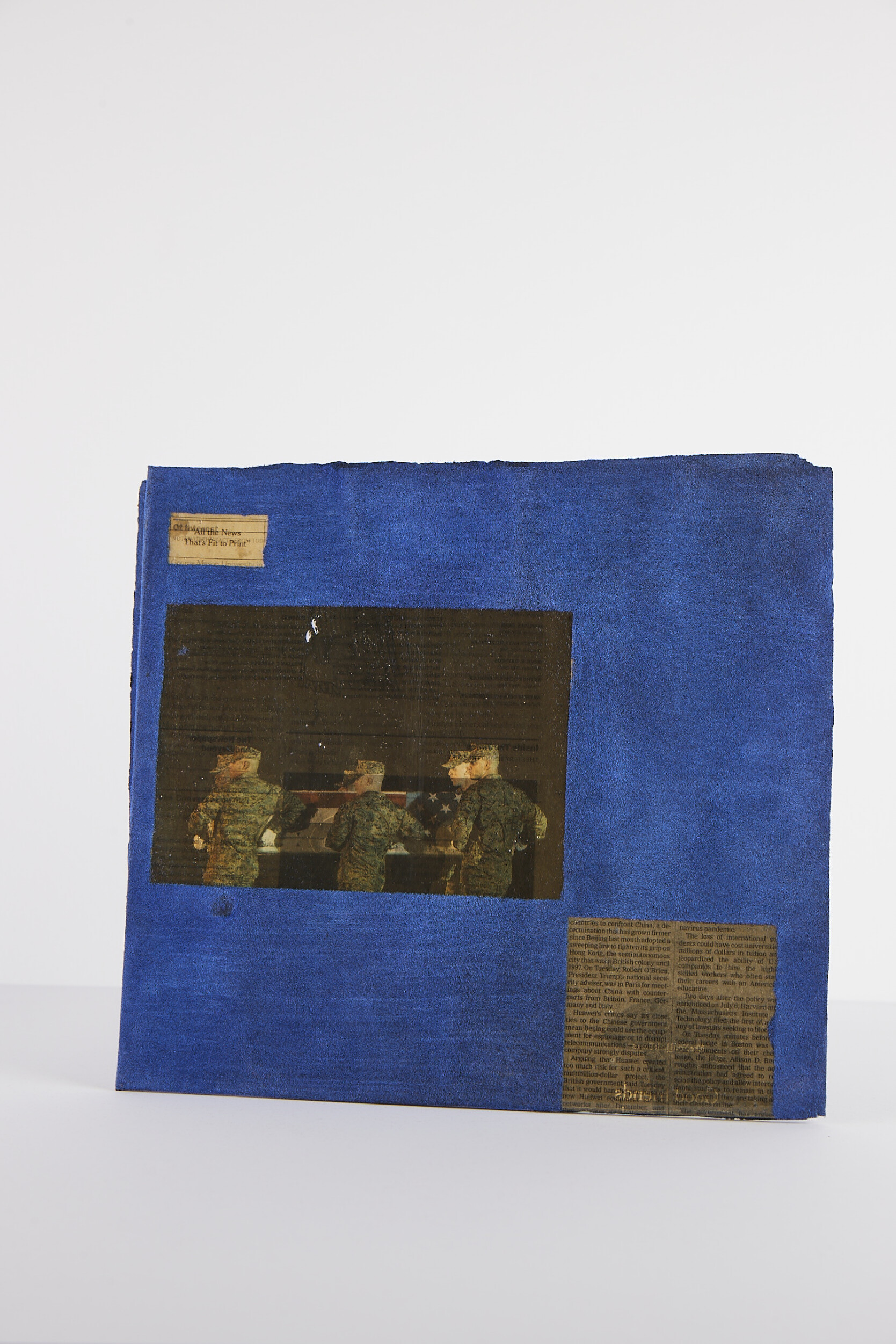
Our Burials (Day 73), Folded newspaper with epoxy resin and nylon flocking fiber, 2020Our Burials (Day 73), Folded newspaper with epoxy resin and nylon flocking fiber, 2020
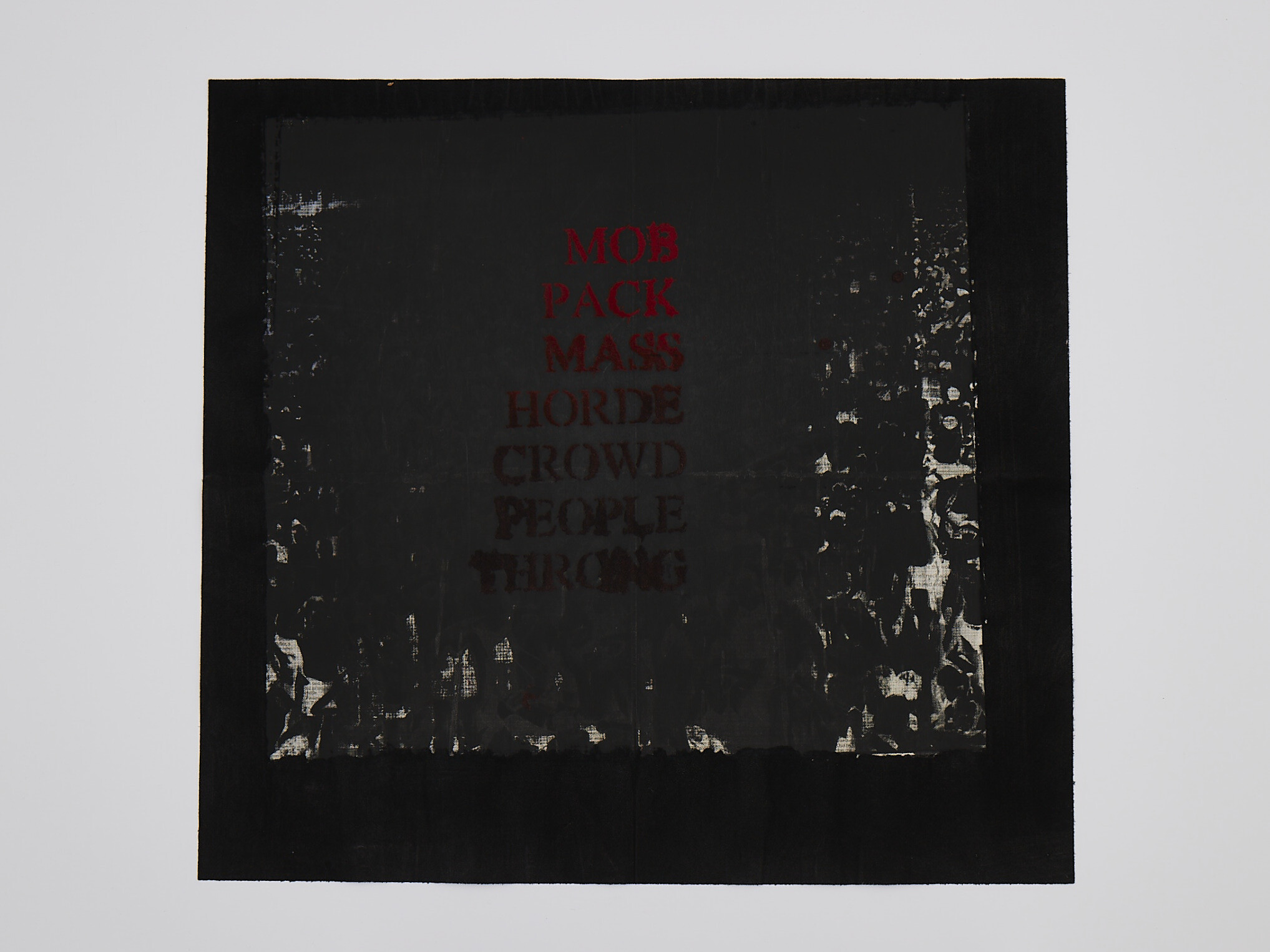
Paint It Black Velvet, Inkjet on collected New York Times sheet with Nylon Flocking Fiber and silkscreen with acrylic ink, 2020Paint It Black Velvet, Inkjet on collected New York Times sheet with Nylon Flocking Fiber and silkscreen with acrylic ink, 2020
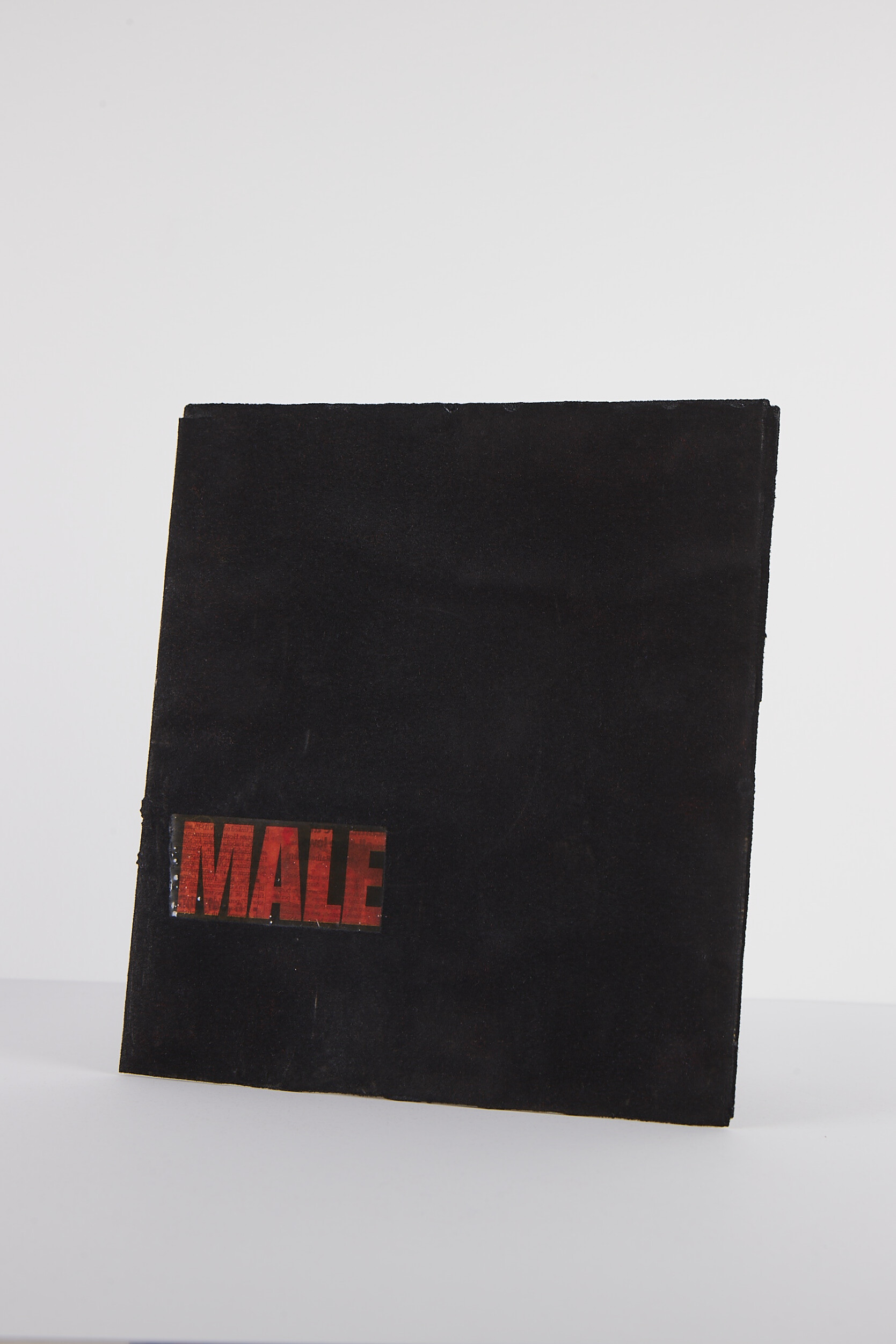
Crowd Fantasies (Day 41), Folded newspaper with epoxy resin and nylon flocking fiber, 2020Crowd Fantasies (Day 41), Folded newspaper with epoxy resin and nylon flocking fiber, 2020
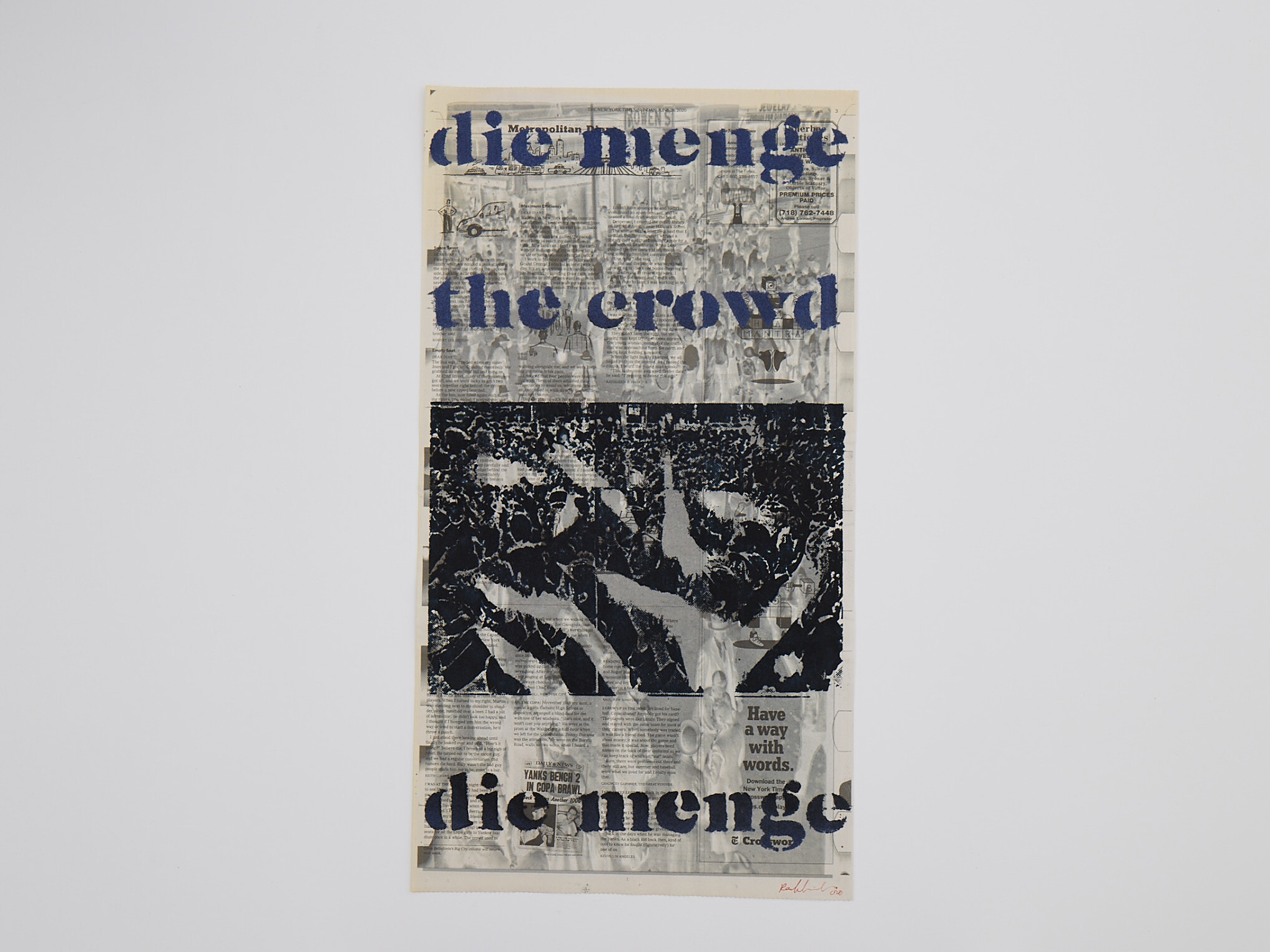
Die Menge, Inkjet on collected New York Times sheet with Nylon Flocking Fiber and silkscreen with acrylic ink, 2020Die Menge, Inkjet on collected New York Times sheet with Nylon Flocking Fiber and silkscreen with acrylic ink, 2020
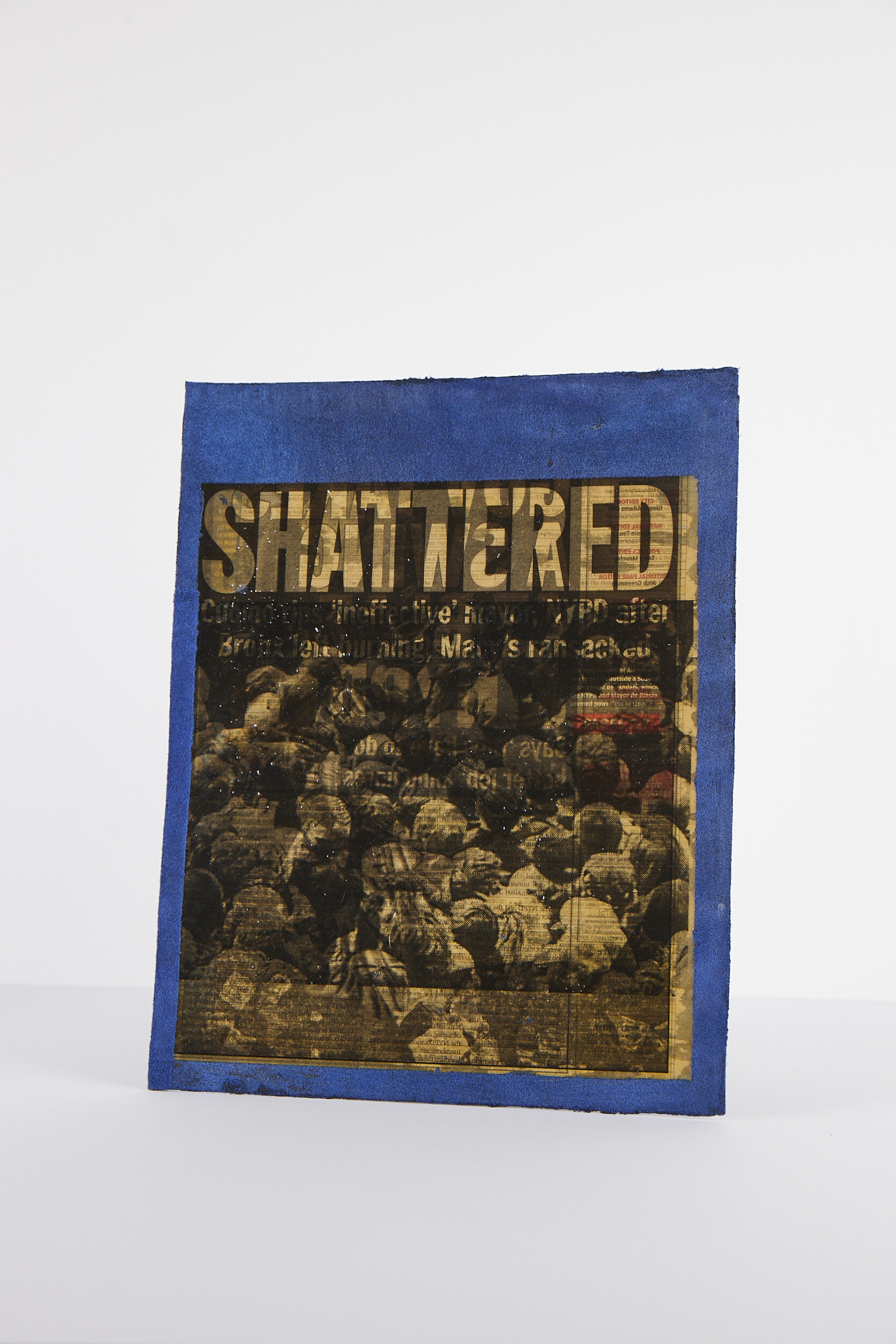
Shattered Society, (Day 76), Folded newspaper with epoxy resin and nylon flocking fiber, 2020Shattered Society, (Day 76), Folded newspaper with epoxy resin and nylon flocking fiber, 2020
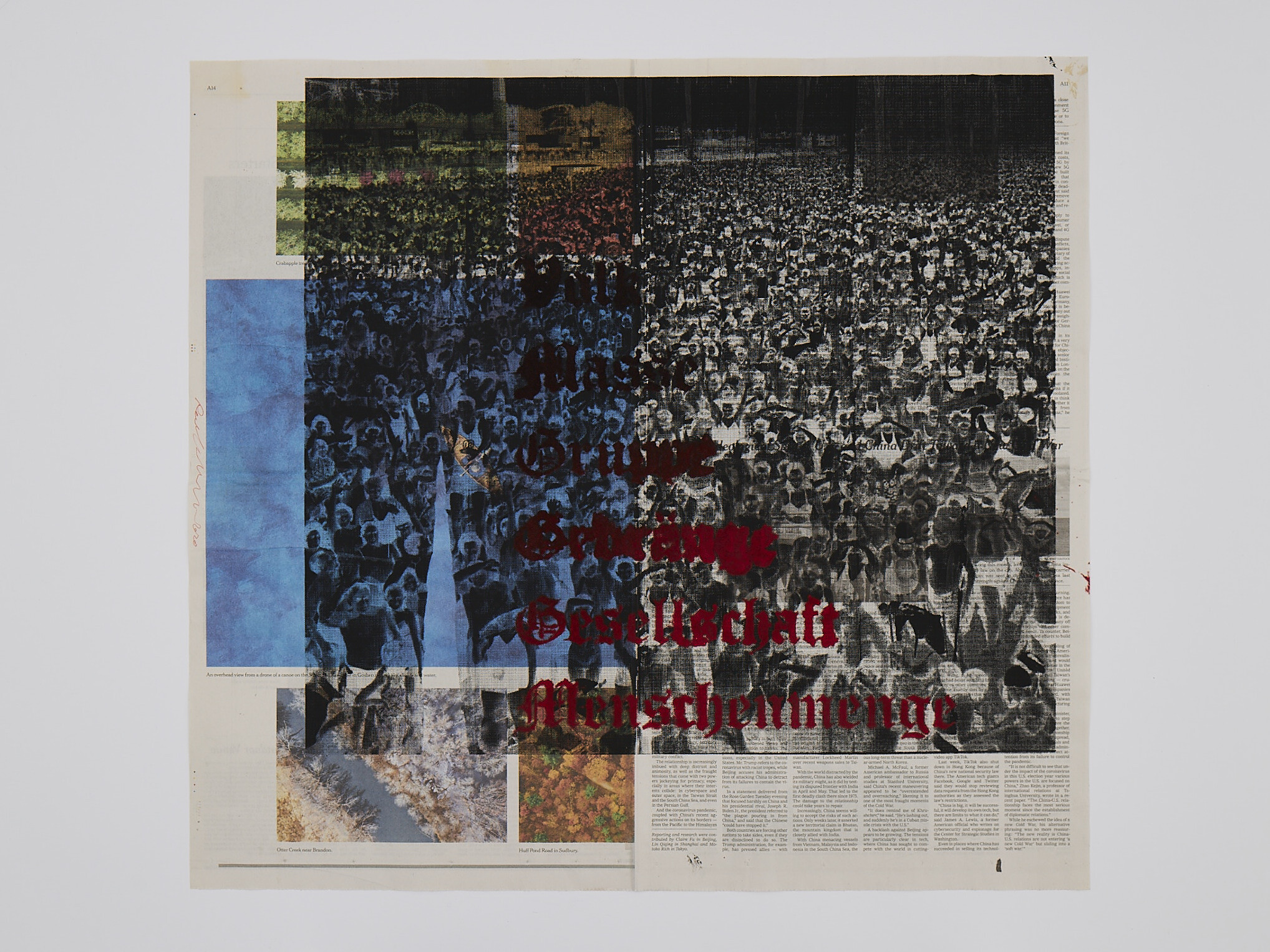
Quiet Societies, Inkjet on collected New York Times sheet with Nylon Flocking Fiber and silkscreen with acrylic ink, 2020Quiet Societies, Inkjet on collected New York Times sheet with Nylon Flocking Fiber and silkscreen with acrylic ink, 2020
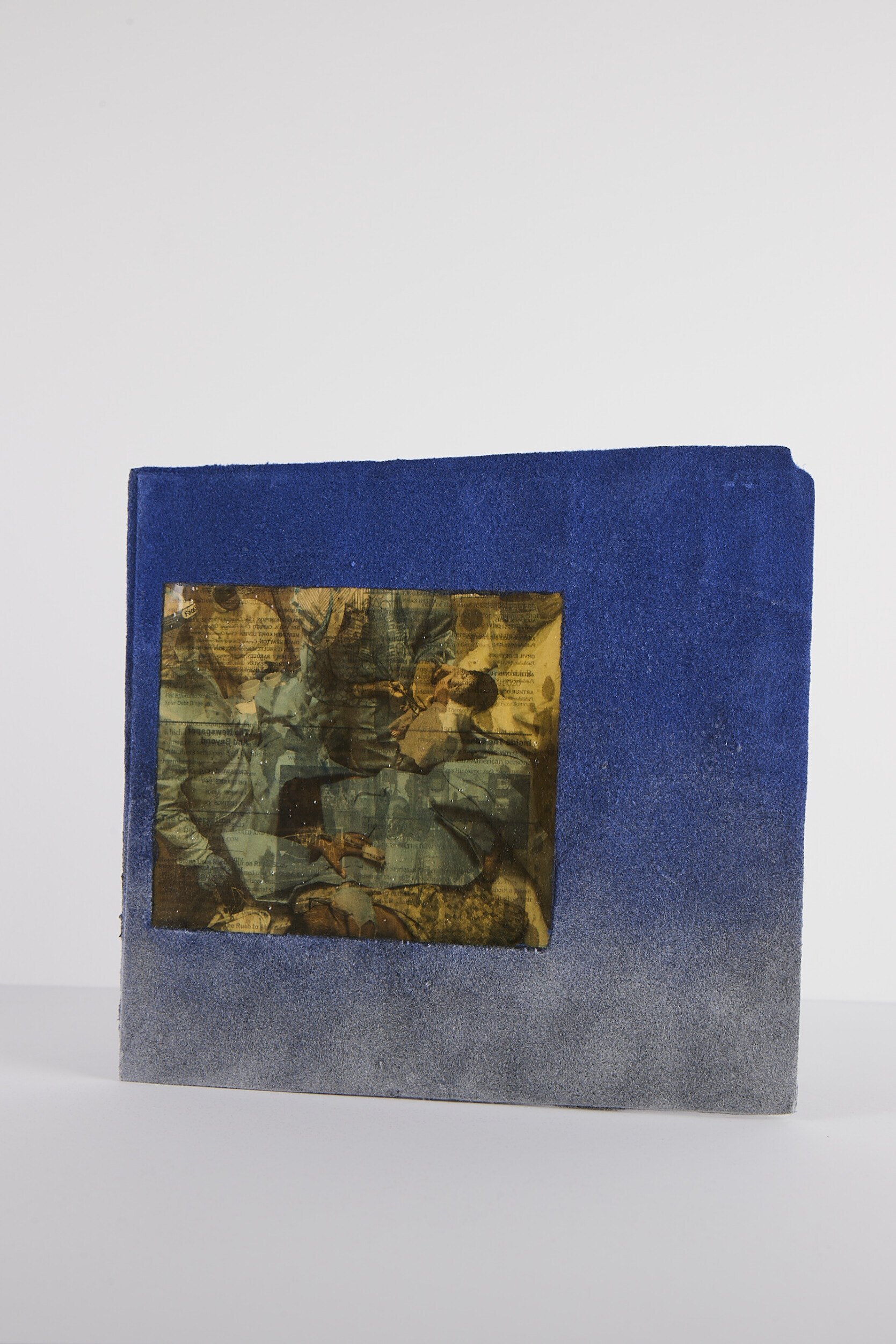
Life Goes on (Day 69), Folded newspaper with epoxy resin and nylon flocking fiber, 2020Life Goes on (Day 69), Folded newspaper with epoxy resin and nylon flocking fiber, 2020
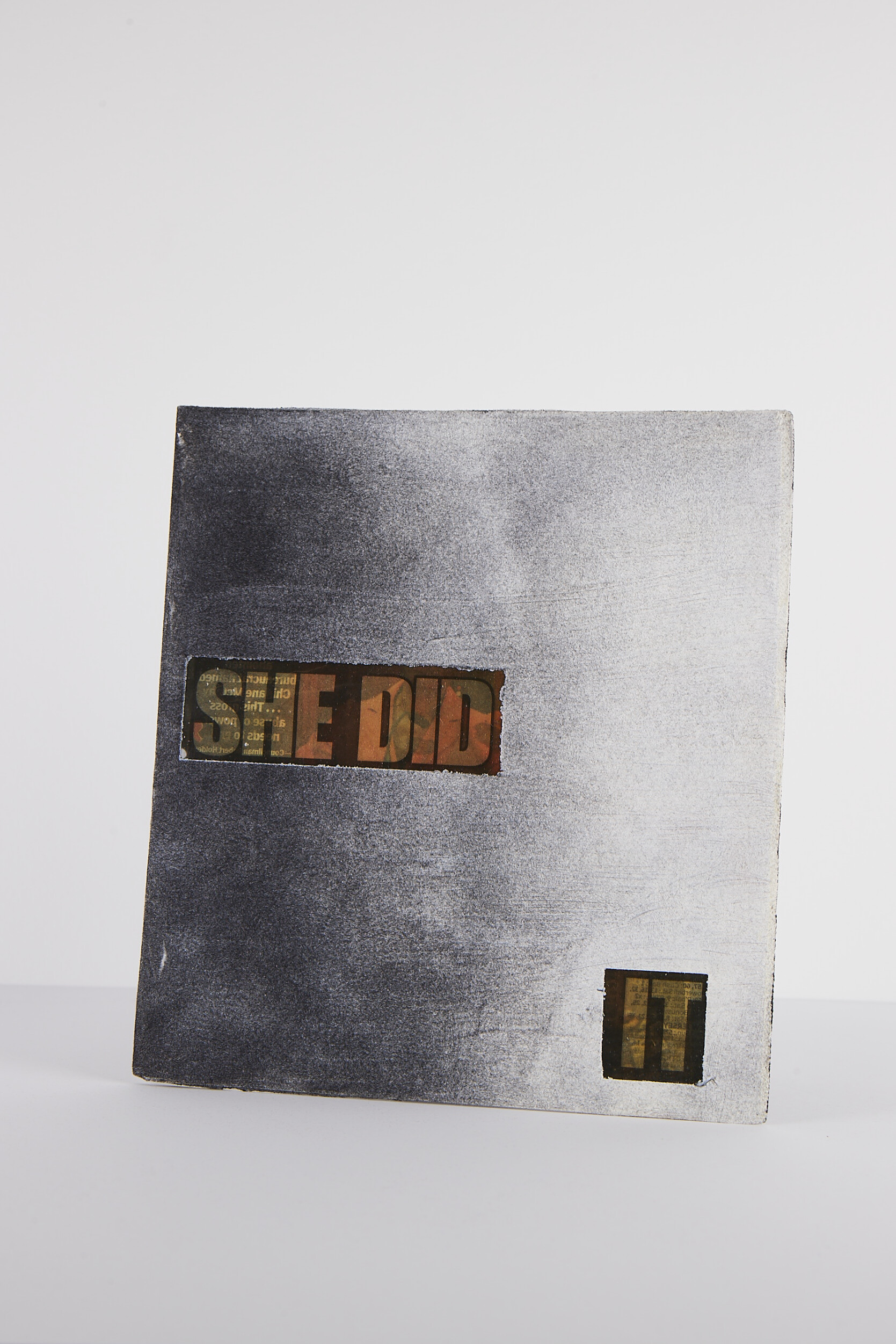
She Did It (Day 123), Folded newspaper with epoxy resin and nylon flocking fiber, 2020She Did It (Day 123), Folded newspaper with epoxy resin and nylon flocking fiber, 2020
